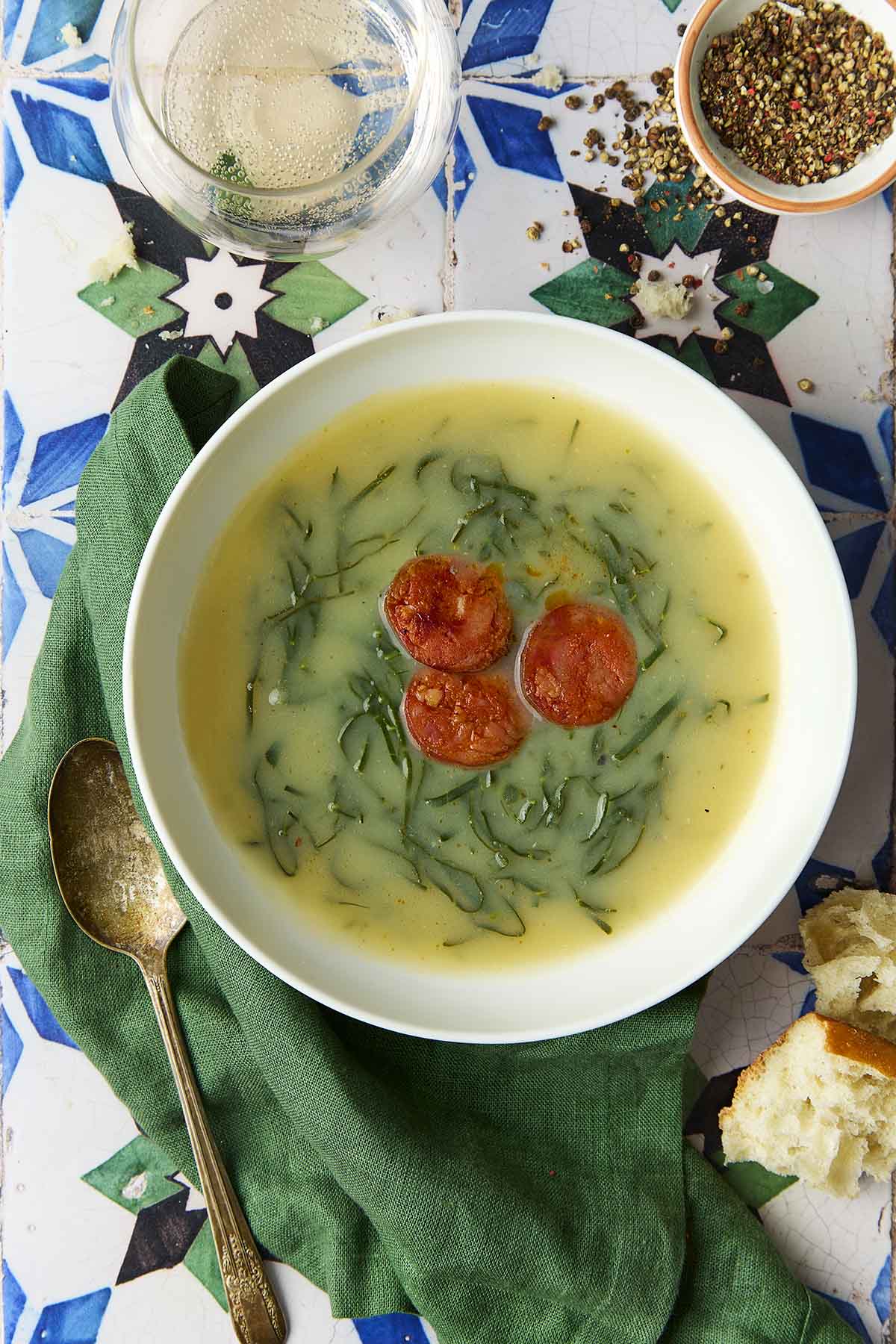
Jump To
- Why This Recipe Works
- What Greens Are Traditionally Used in Caldo Verde Recipe?
- Notes on Ingredients
- How to Make This Recipe
- Storage & Reheating
- Caldo Verde Questions Answered
- Pro Tips
- More Incredible Portuguese Soup Recipes
- Write a Review
- Caldo Verde ~ Portuguese Green Soup Recipe
- Recipe Testers’ Reviews
Considered by many to be Portugal’s national dish, caldo verde is found all over the country—from the dining rooms of Lisbon’s luxe hotels to the humblest of farmhouses.
Since my family’s from the Azores—the nine islands 1,000 miles off the coast of Portugal—we ate a more rustic version of this soup. But when I lived in Portugal, I had more than my share of “green broth.” I adore this soup. It’s simple, satisfying, and utterly authentic.
Not only is it ubiquitous, it’s also versatile: Serve it with soft Portuguese rolls as a satisfying lunch or as a first course to pork and clams, salt cod casserole, or my mom’s carne assada in the evening.

Why This Recipe Works
Blending the potatoes creates a velvety, rich base, while the chouriço infuses the broth with smoky depth. Thinly slicing the kale or collards ensures they soften quickly without losing texture. Using a mix of water and stock boosts flavor, and browning the sausage first lets its fat enhance every spoonful. Simple ingredients, big flavor—this soup is pure Portuguese comfort in a bowl.
What Greens Are Traditionally Used in Caldo Verde Recipe?
Ah, the eternal question! A while back, I contributed to the Oxford Encyclopedia of Food and Drink in America. One of the articles was about kale. The traditional greens used for caldo verde are couve galega or Galician kale [technically, Brassica oleracea L. var. acephala (Collard)], which originated in Galicia in northwestern Spain. It has broad, dark-green leaves and thick, fibrous white stems. It’s related to other green veggies, such as cabbage and broccoli.
Unlike collards or kale in America, which are low-growing plants, Portuguese kale or collard greens grow on thick stalks to immense heights. While traveling through the Minho region, I saw men standing on six-foot ladders to harvest the leaves—hence one of its many nicknames: “Portuguese walking stick cabbage.”
Notes on Ingredients
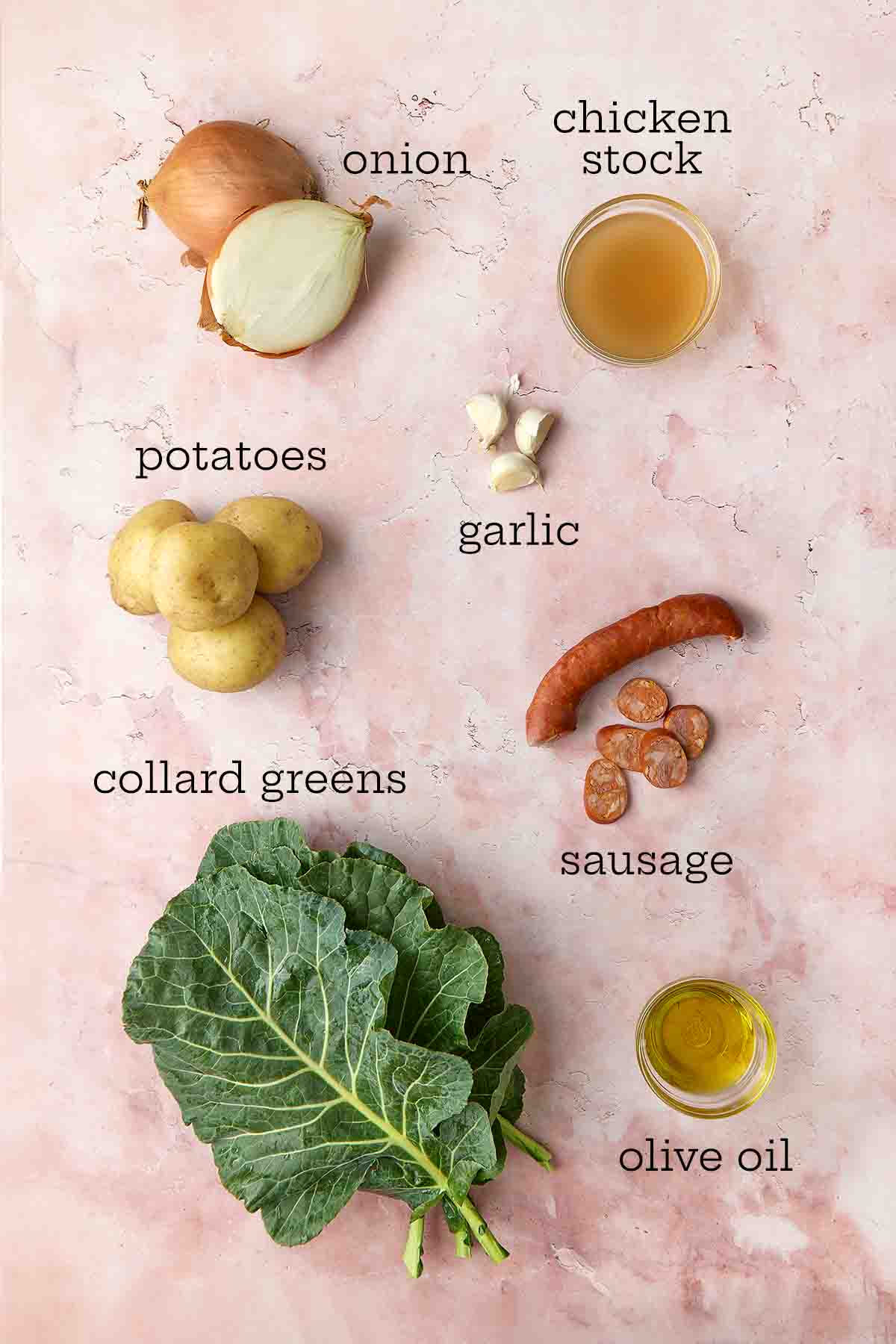
- Greens—My go-to choice is collard greens, but I’ve also used lacinato kale (dinosaur kale). Their flat leaves make it much easier to get those requisite filament-thin slivers. Avoid curly-leaf kale; its frilly edges create a mess when sliced.
- Yukon Gold Potatoes—Portugal has the most earthy, intensely yellow potatoes I’ve ever seen. I’ve tried all kinds of taters in this dish, but Yukon Golds come closest to the original.
- Sausage—Thankfully, chouriço and linguiça, Portugal’s sausage royalty, are easy to find now. I go for the milder version, but if you’re a chilihead, grab the hot one.
How to Make This Recipe

- Warm the olive oil in a large pot. Add the chouriço and cook until lightly browned, 3 to 5 minutes.
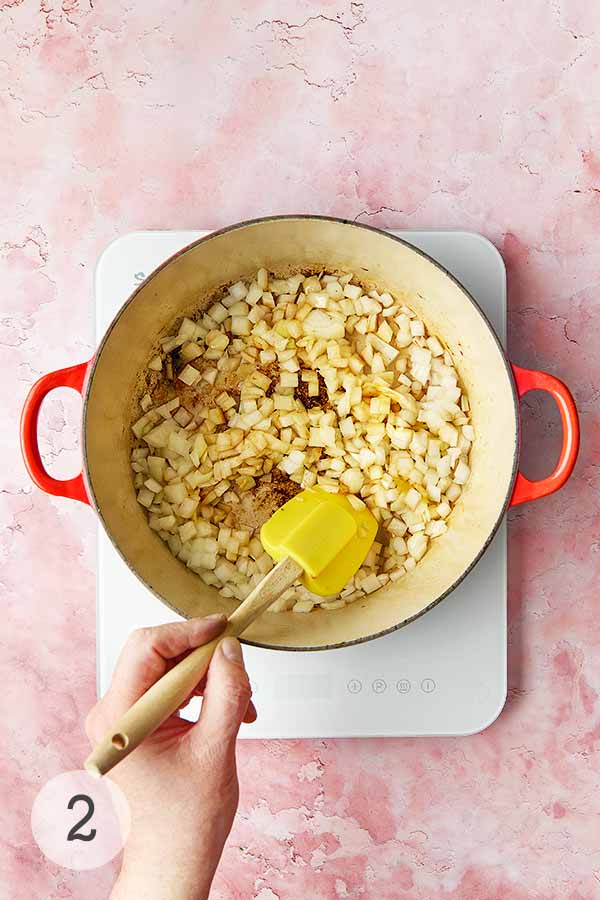
- Dump in the onions, season with salt, and cook until translucent, 5 to 7 minutes. Stir in the garlic and cook for 2 minutes more.
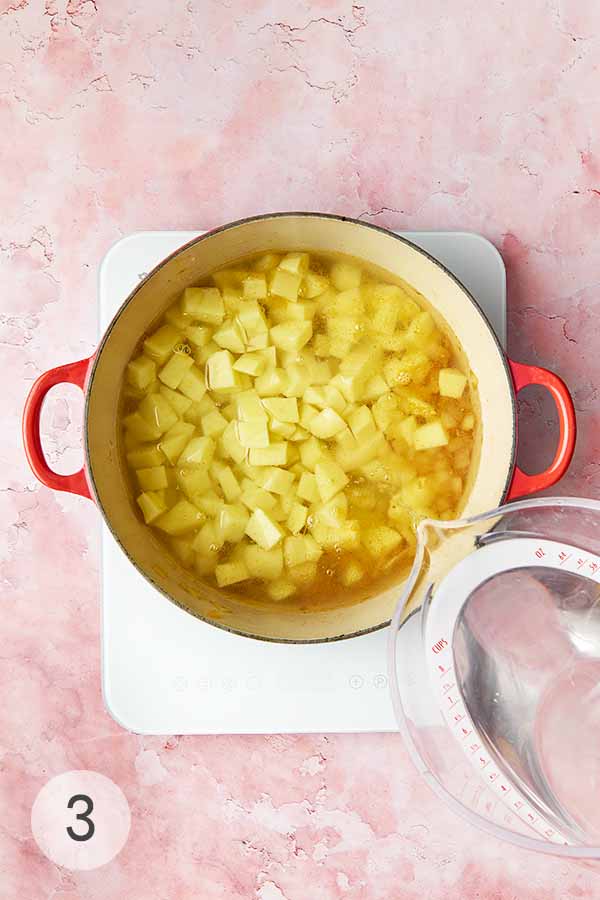
- Plonk in the potatoes, pour in the water, and bring to a boil.

- Lower the heat and simmer until the potatoes are almost tender, 10 to 20 minutes.
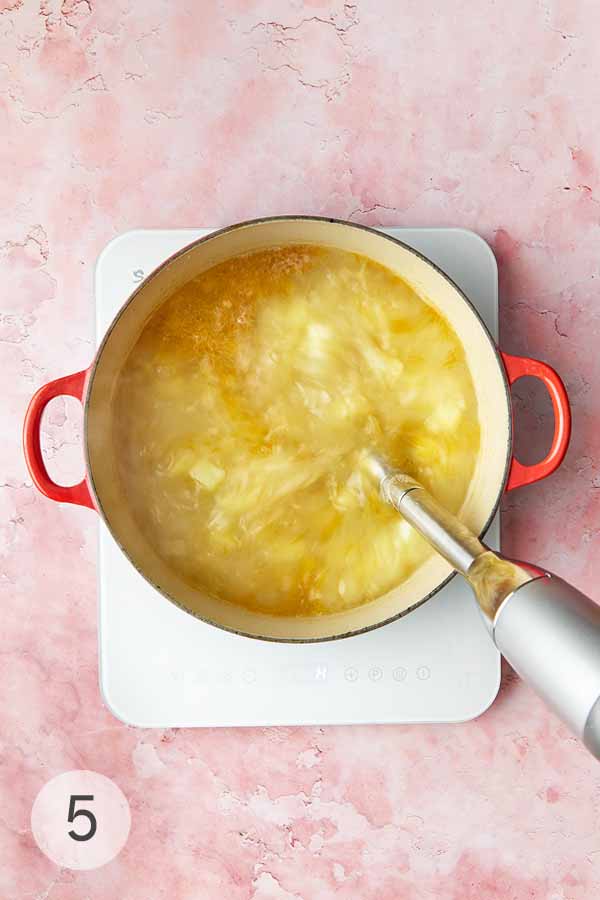
- Let the caldo verde cool a bit, then purée it using an immersion blender or a blender.
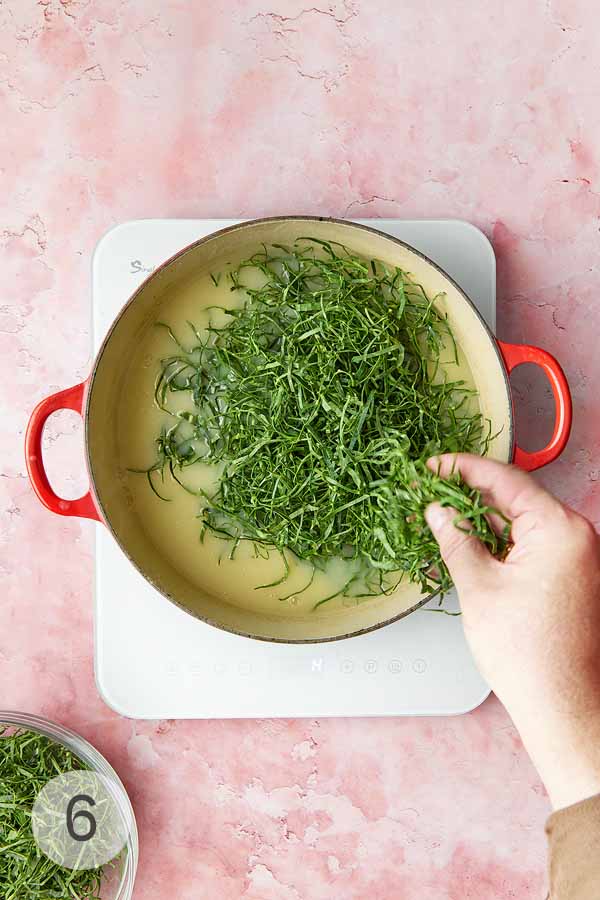
- Swirl in the kale, bring everything back to a boil, and then reduce to a simmer until tender, 2 to 5 minutes. Season well.
- Ladle the soup into bowls and top with several slices of sausage.
Storage & Reheating
Once the caldo verde has cooled, ladle it into an airtight container and refrigerate for up to 4 days or freeze for up to 3 months.
To reheat, warm the soup in a small pot over medium heat, stirring occasionally. If the soup thickens, add a splash of water or broth.
For frozen soup, thaw overnight in the fridge before reheating.
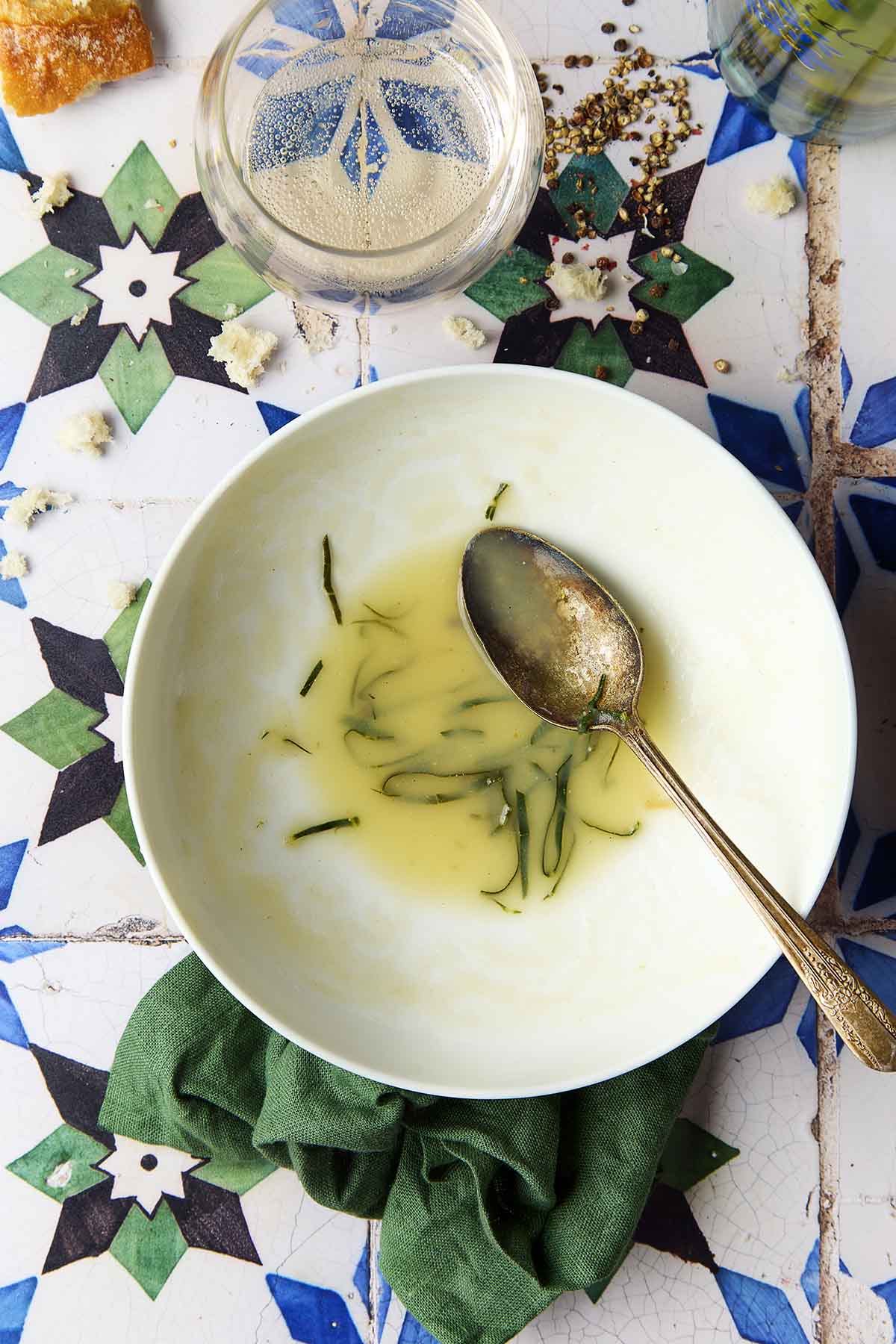
Caldo Verde Questions Answered
Pro Tips
- Slice the Collards or Kale Thinly: Cut the greens into whisker-thin slices—this is what gives the soup its signature look and texture.
- Boost the Flavor: Traditional Portuguese caldo verde recipe is made with just water, but using half water and half chicken or vegetable stock adds a deeper, richer flavor.
- Check for Dietary Needs: This recipe is naturally gluten-free and dairy-free, but always double-check the sausage ingredients to be sure. Some brands may contain fillers or additives.
Write a Review
If you make this recipe, or any dish on LC, consider leaving a review, a star rating, and your best photo in the comments below. I love hearing from you.–David
I nervously made this caldo verde recipe for my stepdad, who is from the Azores. He read the ingredients and stated that it looked correct. He’s a nasty critic of food, LOL). He said, “You can try, but it’s not going to taste like Tia Helena…” I am happy to report that he LOVED this soup and called Tia Carmen to brag how good it was!! Whew! So people, make this–it’s truly a fantastic recipe!
Christine
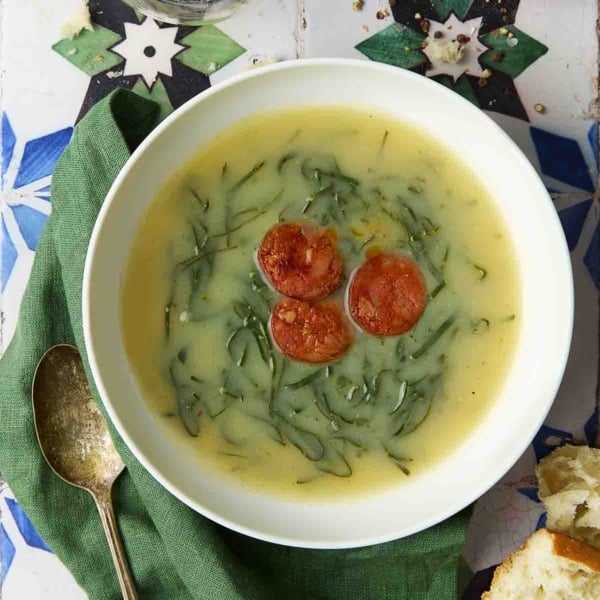
Caldo Verde ~ Portuguese Green Soup
Ingredients
- 1/4 cup extra-virgin olive oil
- 10 ounces chouriço, linguiça, or Spanish chorizo, sliced into 1/4-inch (6-mm) coins
- 1 large Spanish onion, diced
- Kosher salt
- 2 garlic cloves, sliced; don’t be afraid to go for a third or fourth. We Portuguese love their garlic
- 6 medium potatoes, peeled and roughly chopped (I prefer Yukon Gold, as they as similar to Portugal's yellow potatoes)
- 8 cups cold water, or half homemade chicken stock or canned chicken broth, and half water
- 1 pound collard greens or kale, stems removed, leaves cut into very, very thin slices
- Freshly ground black or white pepper
Instructions
- In a large pot over medium heat, warm the oil. Add the chouriço and cook until lightly browned on both sides, 3 to 5 minutes.
- Remove the sausage using a slotted spoon to a plate, making sure the sausage drain well into the pot; its fat will flavor the soup.
- Dump the onions into the pot. Sprinkle with salt and cook, stirring occasionally, until softened and translucent, 5 to 7 minutes. Add the garlic and cook for 2 minutes more.
- Plonk in the potatoes, add the water (or a combo of water and chicken stock), and bring to a boil. Reduce the heat to a simmer. Cook until the potatoes are almost tender, 10 to 20 minutes. Remove from the heat and let the soup cool slightly.
- When the caldo verde has cooled a little, purée it using an immersion blender or a food processor. (Tradition demands that one slice—and only one slice—of chouriço is added to each bowl, lthough some cooks like to add half the sausage to the soup before puréeing. It’s your choice. And that one-slice thing? To hell with it!)
- Add the collards to the soup, bring it back to a boil, and then reduce the heat and simmer until tender, 2 to 5 minutes. Season with more salt, if needed, and pepper.
- Ladle the caldo verde into bowls and garnish with the remaining slices of chouriço. Comer agora!
Notes
- Storage–Store leftover caldo verde in a sealed container in the fridge for up to 4 days.
- Freezing–To freeze the soup, let it cool fully, then portion it into containers or resealable bags and store it in the freezer for up to 3 months. Thaw in the refrigerator before reheating.
- Reheating and thinning–Reheat in a saucepan over medium-low heat until warmed through. If the soup is too thick after reheating, thin with additional broth or water.
- Dietary–This recipe is generally suitable for gluten-free and dairy-free diets, but be sure to check the ingredients of the sausage you use.

An LC Original
View More Original RecipesNutrition
Nutrition information is automatically calculated, so should only be used as an approximation.
Recipe Testers’ Reviews
This caldo verde/green soup recipe was delicious and pretty nutritious! It warmed our bellies well. My kids are good eaters and they loved this recipe as well.
Despite my efforts, my store only sold chorizo in a roll without casing, loose. Unable to cut it into medallions, I browned the chorizo loose in step 1 for 5 minutes. I was able to remove it with a slotted spoon reserving fat in the pot. Then I added all of it into the soup before puréeing it with my immersion blender until velvety smooth.
I didn’t cool the soup overnight, but I can see how the flavors would continue to meld. This recipe was fairly simple to prepare, with accessible ingredients (aside from the chorizo in casing) and a combination of flavors that was a new experience. This soup is filling.
It even paved the way for a fun food discussion about Portugal and native ingredients. I love that you gave Portugal credit in the recipe title. This is, as my kids would say, “a definite do again!”
This caldo verde recipe makes a hearty, satisfying, and filling soup. It’s one of the best soups I’ve tasted, bursting with flavor and depth. Delicious.
I prepared the full amount of greens as instructed but when I went to add it, I stopped at about halfway. If i had added it all, it would have been more of a “kale with a chorizo sauce” kind of scenario. As it was, using half, was just right. Delicious soup packed with kale. But still a soup.
I used Cavolo Nero and initially added 1/4 teaspoon of salt because I wasn’t sure how salty the chorizo would taste. I tasted again after I had added the chorizo and added more salt. In total, I added 3/4 tsp Maldon salt.
I cooled the soup, refrigerated it overnight, and had it the next day for lunch. It was so much better than the day before. The addition of the blended chorizo and letting it rest overnight really did make this into something quite special. Next day, the whole chorizo was still whole and firm but slightly softened by the soup. It added more texture, which was very enjoyable.
There was just me eating this and one bowl was enough for lunch. I have put the rest into individual Tupperware and am freezing it. That’s another 7 portions so a total of 8 servings.
Kale soup? Caldo Verde? Green Soup? Call it what you will, this soup is hearty and homey and ready in under an hour! In spite of using a very sharp knife and my best kitchen skills, I didn’t achieve the thin kale shreds the recipe called for, so the final result wasn’t quite as elegant as the photo shows, but that didn’t detract from the flavor of the final result.
I used a mild chorizo sausage, Yukon gold potatoes (which I didn’t peel as the skins were paper thin), curly kale, and homemade chicken stock. I did add a sprinkle of crushed red pepper flakes at the end of cooking, but I would hold off on the final seasoning until you determine how much heat and salt your sausage is adding to the mix.
Served with a salad and grilled cheese sandwiches, this made a great casual supper.
I added 1/2 the chorizo back to the soup before blending and didn’t overprocess the mixture using an immersion blender. Coming across the slices of sausage and a few stray cubes of potatoes are nice little surprises.
This was fantastic. But I think much depends on the quality of your chorizo and stock. I’ve made it before using polish sausage or keilbasa and boxed stock and it was good but not a 10.
Simple yet satisfying and budget-friendly! I’m not going to lie. When I first saw this Portuguese kale soup recipe, I was expecting it to be boring and lacking in flavor, but that was surprisingly not the case. This soup, while not boasting many ingredients or, for that matter, many herbs, was pleasantly satisfying even if simple in flavor.
I chose to blend some of the chorizo into the soup to enhance the flavor, and I think that was a good choice. I used a Spanish chorizo and the complexity of its flavor really gave the soup that certain something that would have been missing without it. My husband also really enjoyed it and his favorite part is that it tastes thick and rich without added cream or dairy.
I also thought the kale really enhanced the overall experience. Even though the kale was heated and wilted in the soup, it still retained some bite or toothsomeness that was a nice bit of texture in the creamy soup. This soup would be delicious on a cool fall or winter day and is a very budget-friendly recipe to boot!
In the future, I would consider adding some other flavor enhancers, such as smoked sweet paprika, to change the flavor a bit. I would also consider serving it with a garlicky, cheesy crostini!
I cooled the soup until the next day and it was great. The soup got thicker when cooled.
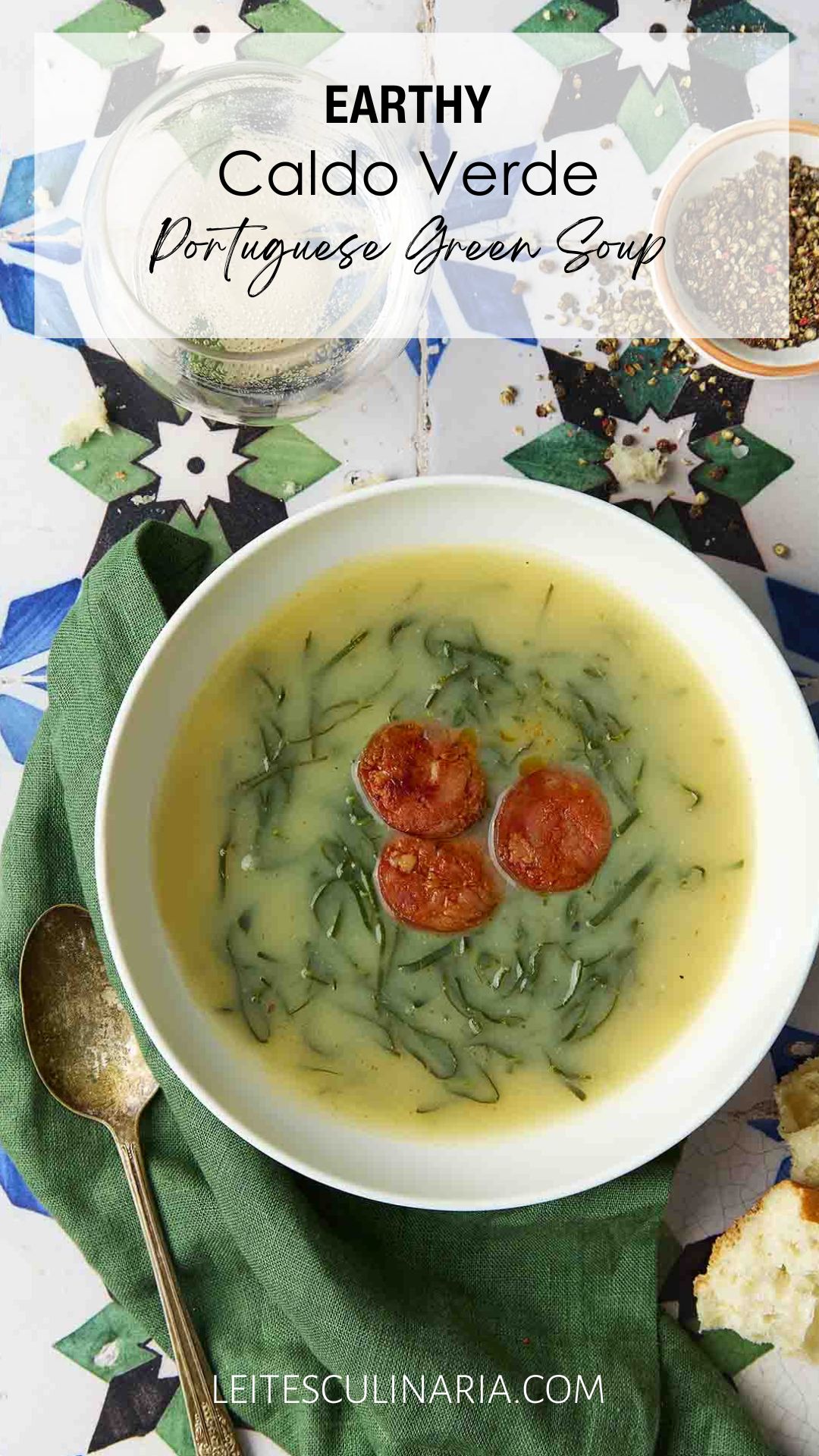
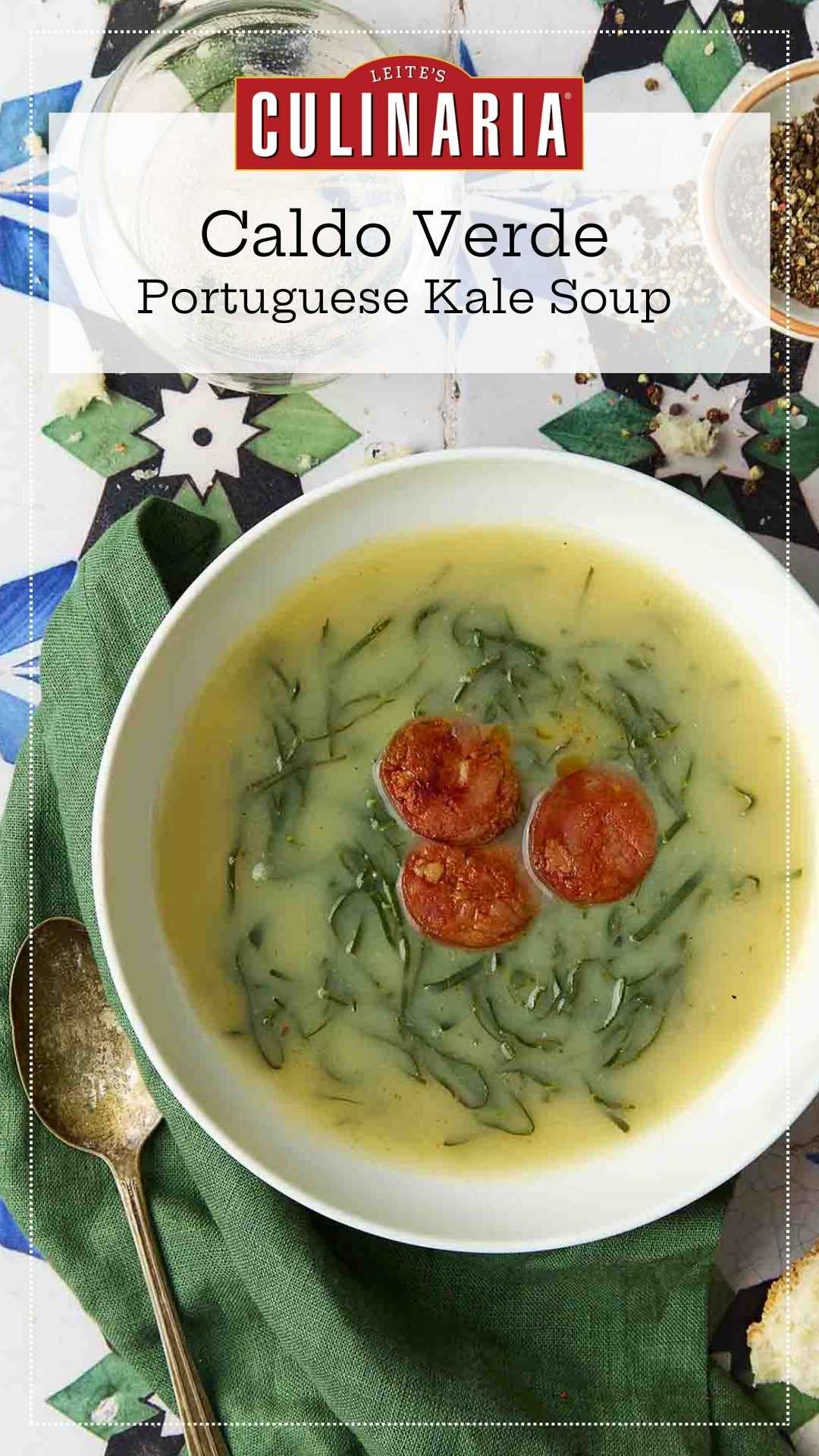
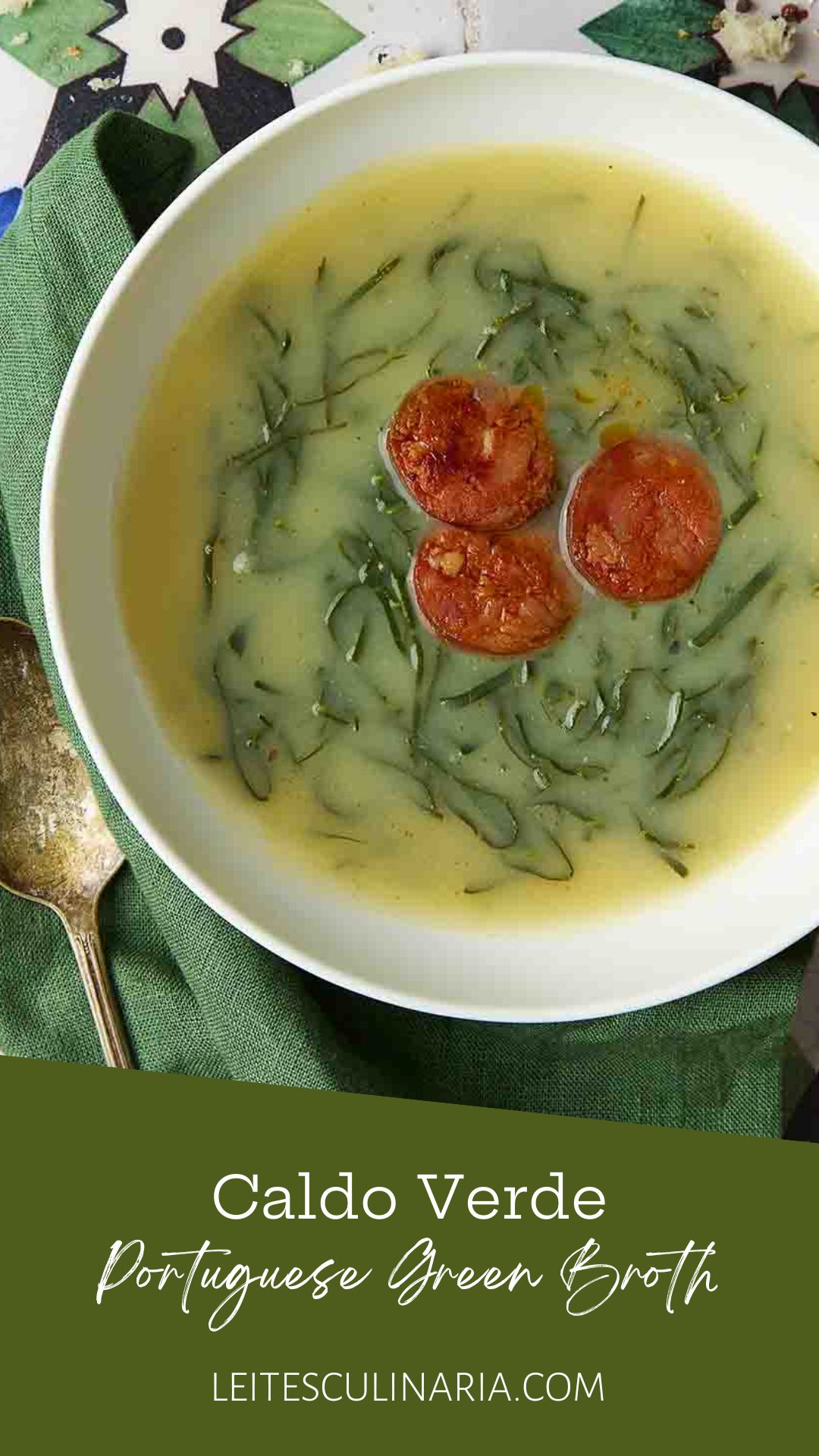
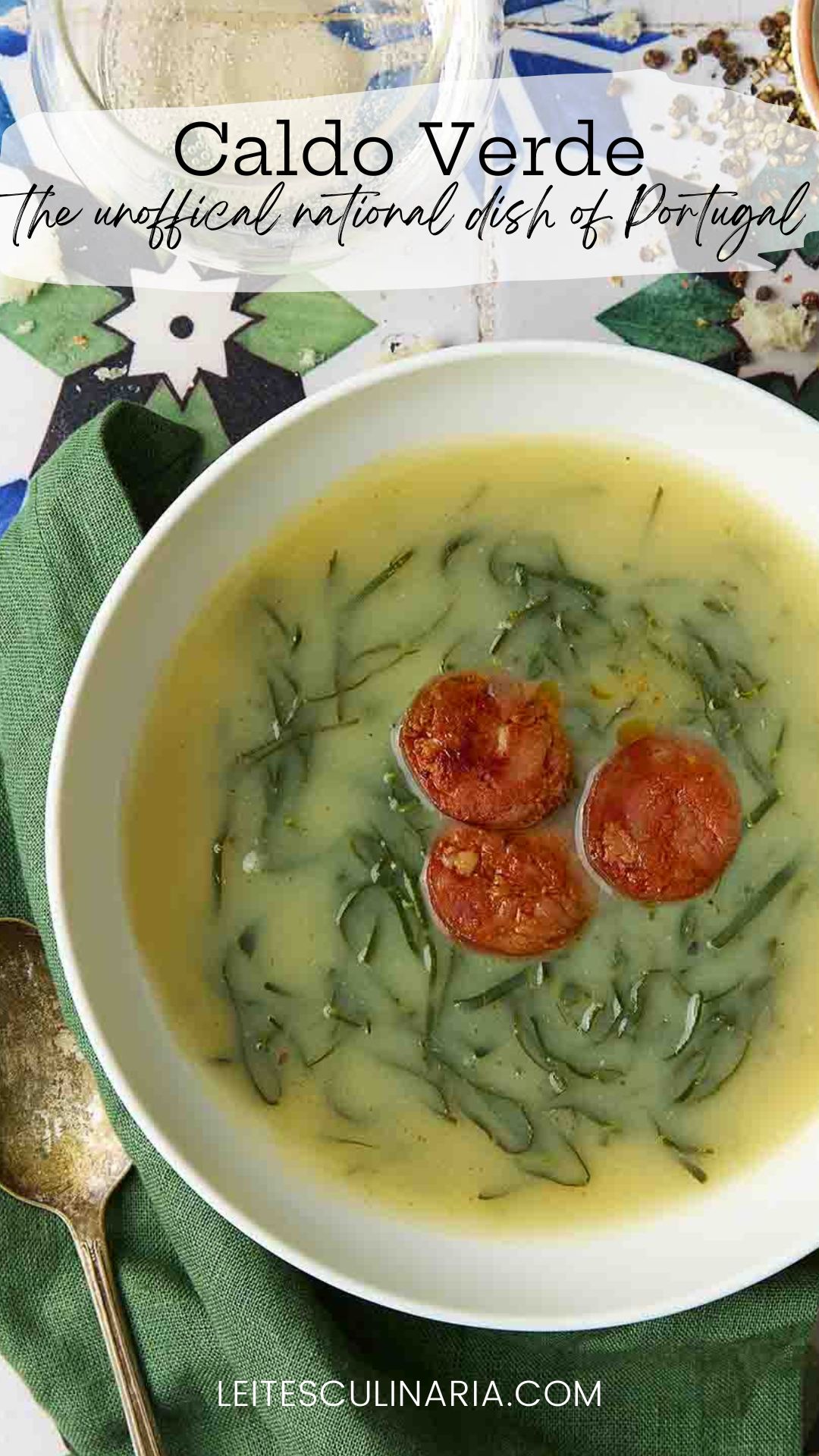
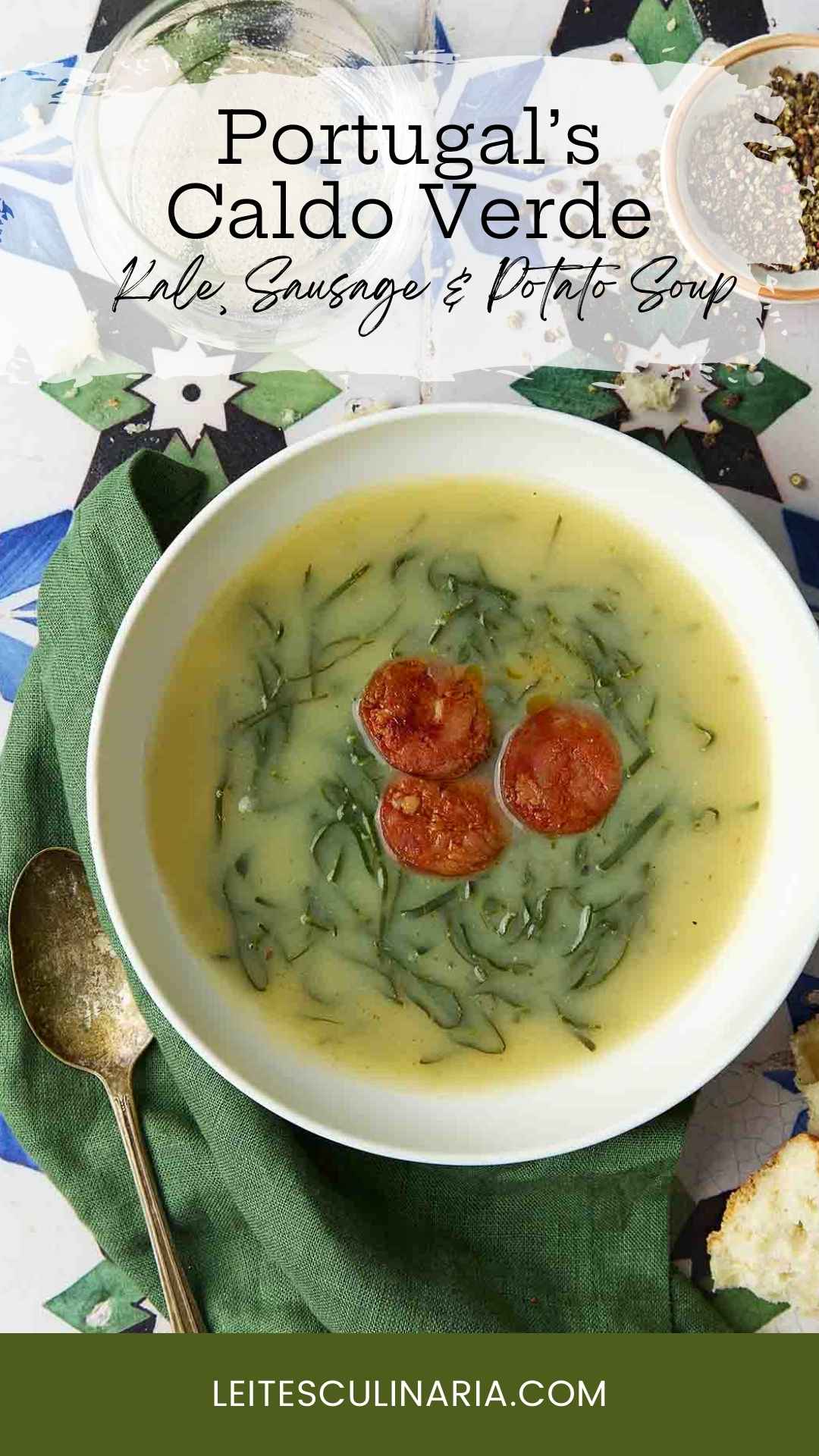
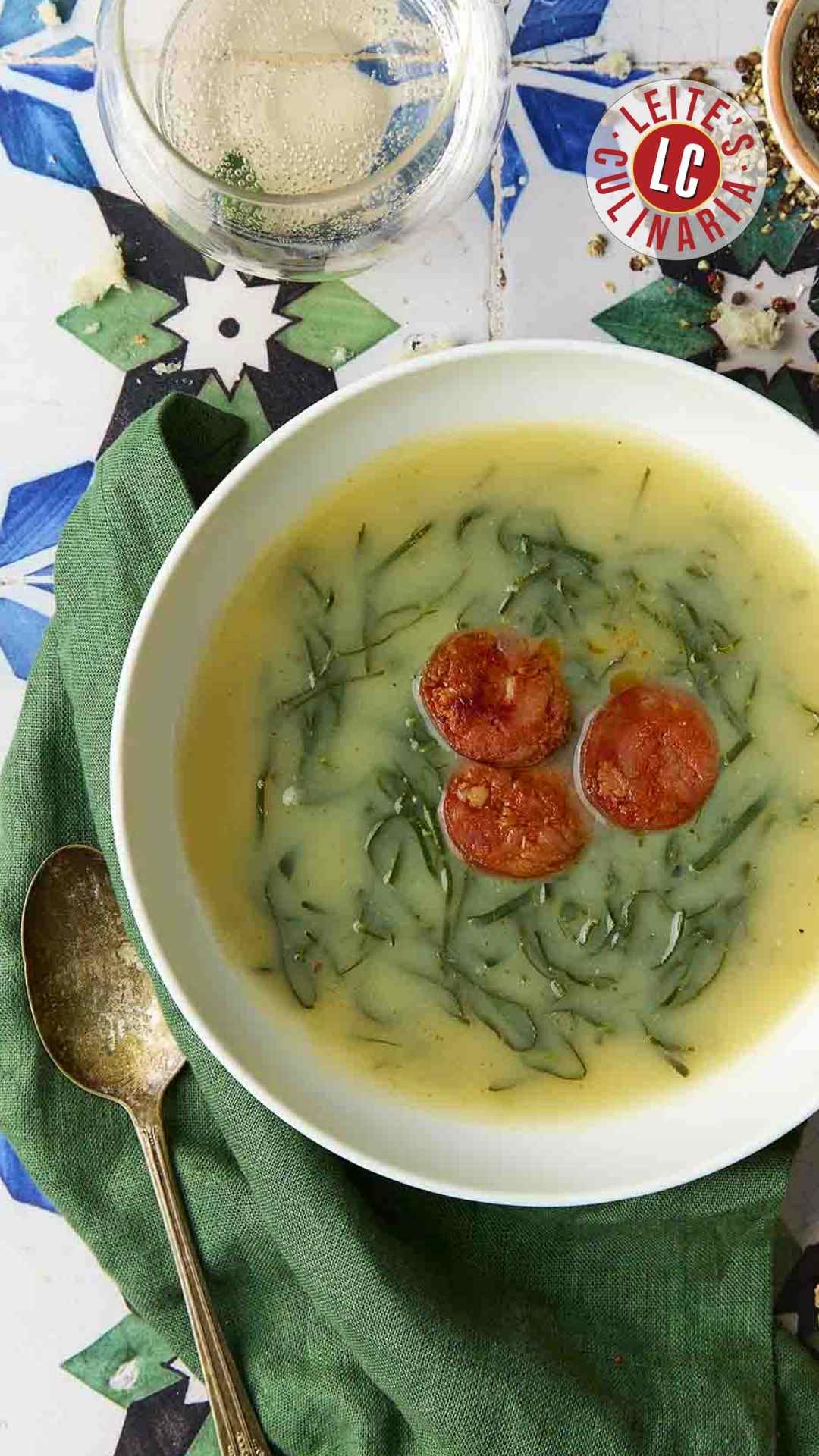
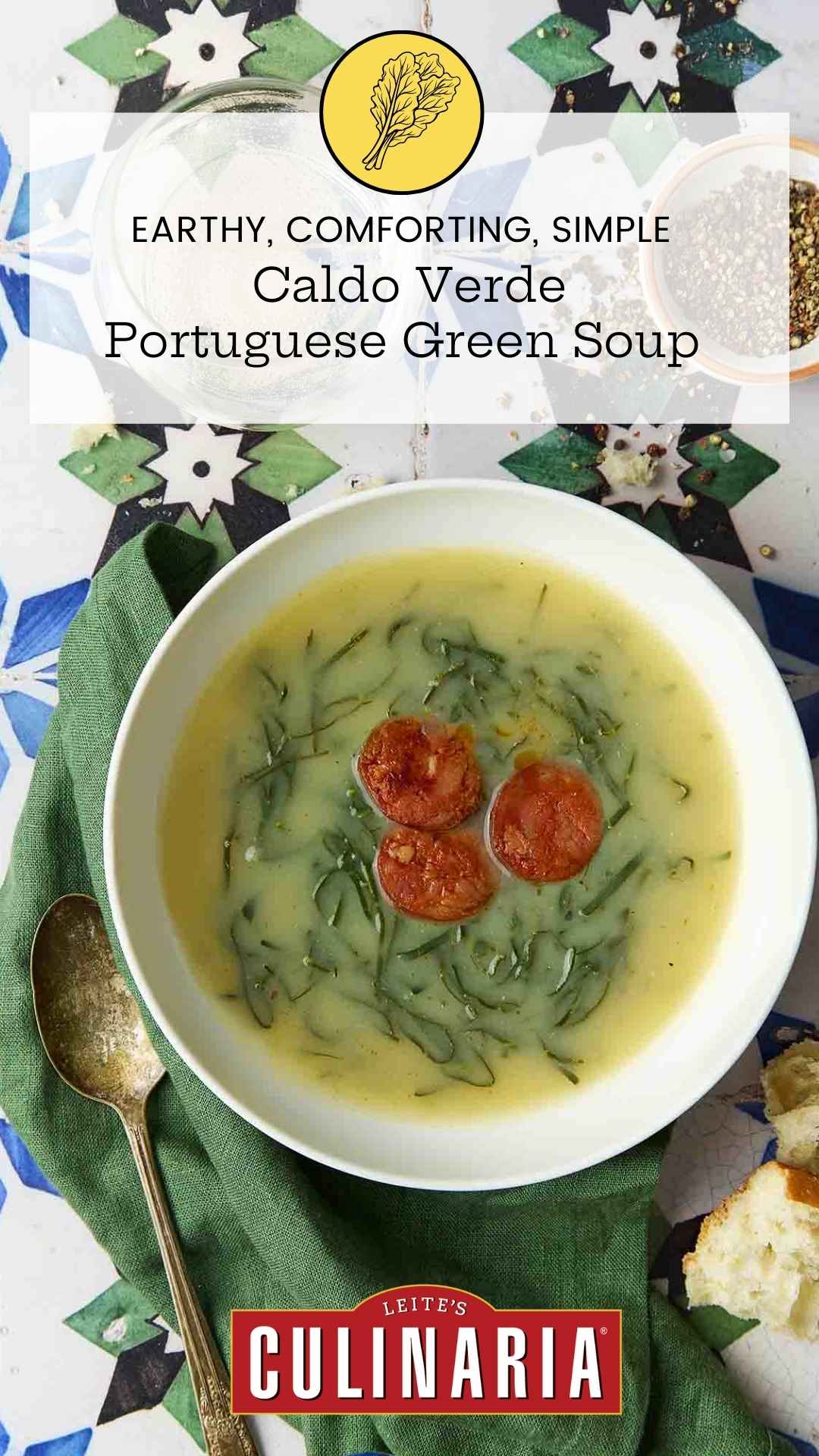
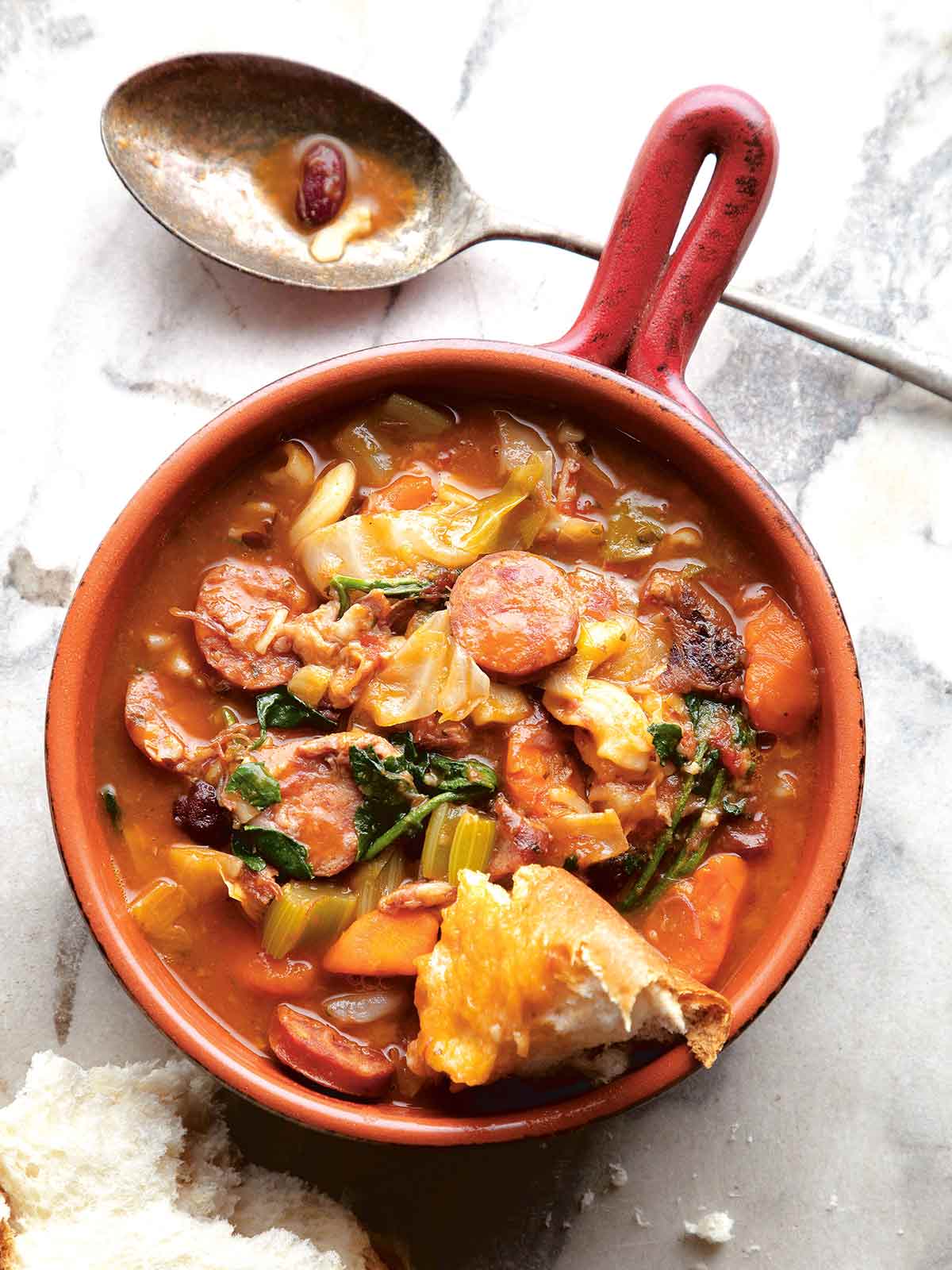
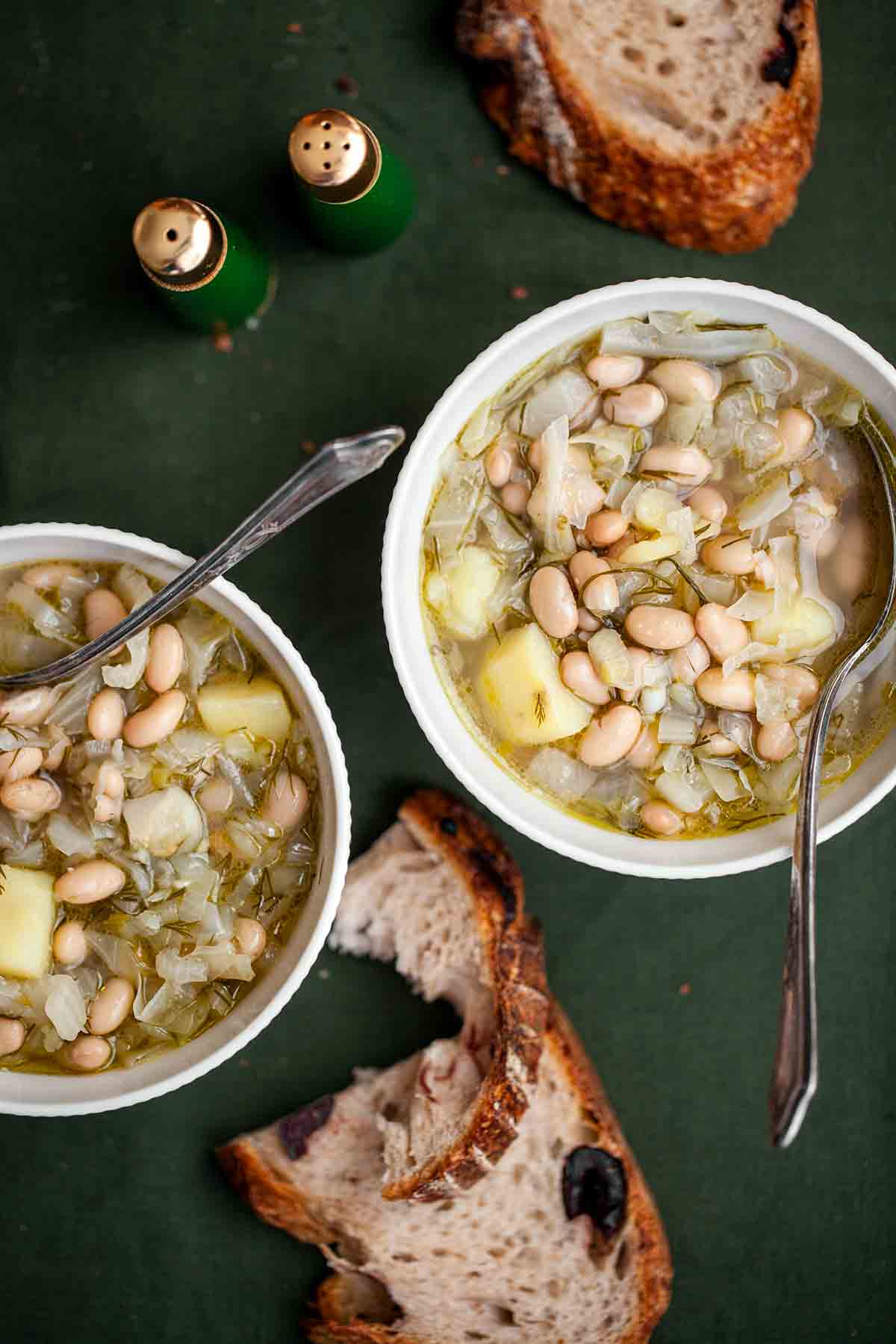











Just reading this recipe brought back so many memories! I grew up in California, but my parents are from New Bedford. My mother’s family is from the Azores, and my Father from Madeira. Differnt styles, but the same on my heart. Can’t wait to try it!
Susan, please tell me what you think.
Ok – I’m from the South and grow collard greens. What about the puree part – I’d like to make this the traditional way the Portuguese did two hundred years ago because I’m a purist. How would the Portuguese have made this long ago? Would they have mashed the potatoes by hand? Also, I don’t know where to get this sausage listed in the recipe – do they sell it in the South?
Richard, two hundred years ago and without electric, yes, they would have mashed the potatoes by hand. I don’t know where in the South to get the sausage, but you can order it from Lopes Sausage company in Newark, NJ. (973) 344-3063.
So, not traditional, but I don’t puree it. I dice some of the potatoes small, and some into hearty bite sized chunks. You get a good balance of broth and creaminess. Now, you can find linguica anywhere. Not quite the same as chourico, but a pinch of added smoked paprika will add a little bit more of that delicious flavor. I hope we all know that for every Portuguese Grandmother there is a different recipe. That’s the beauty of these old recipe…make it yours and have fun with it.
Thanks for that, Kris!
Do you have any tips for slicing the kale really thin? I find after I’ve sliced it off the stalks I have a total mess. I’m using curly kale so there’s just no way to stack it and roll it into a cigar like recipes always suggest. My mother saw, either in Portugal or Brazil (I can’t remember), a contraption in the market that sliced your kale or collards and you walked away with a bag of perfectly sliced kale. I’m so jealous! I would make this all the time if I didn’t have to wrestle with a mess of kale.
Liz, yes, those contraptions are neat. Using flat leaf kale is easier, but if you can’t get it, what I do is remove the stalk and lay one half on top of the other. Then I go at it with a knife. Easy!